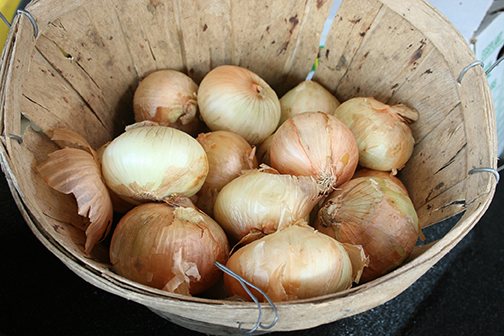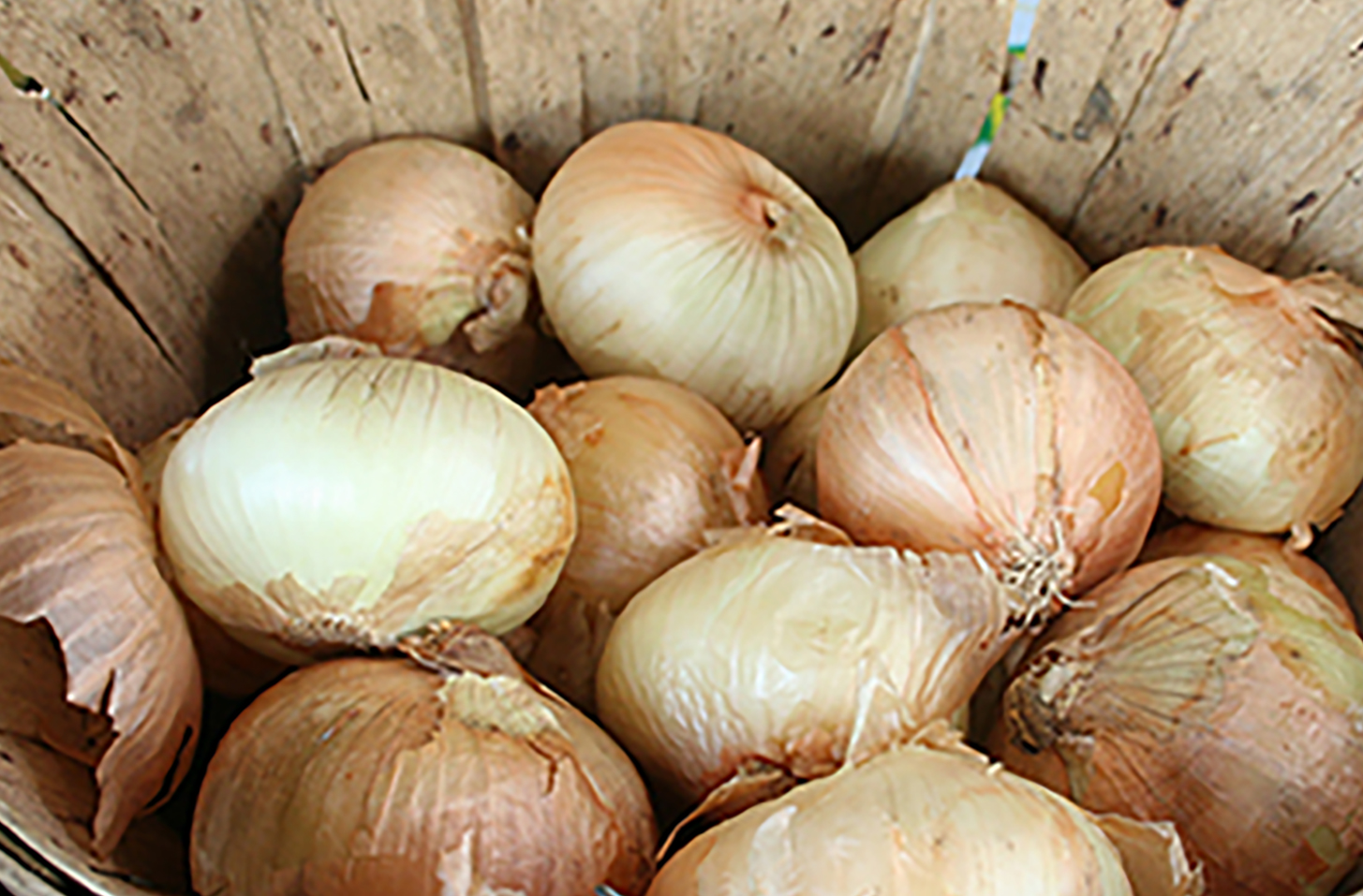With Georgia’s Vidalia onion harvest approaching, growers must prepare to protect their crops from diseases during storage, according to Tim Coolong, University of Georgia Cooperative Extension vegetable specialist.
Onions are typically harvested between mid-April and mid-May in Georgia. Due to the abundance of onions harvested over a short time period, much of the crop is placed in storage units. By spacing out the time they have to sell their crops, farmers have a better opportunity to capitalize on higher prices that may occur later in the year.
However, being stored for an extra month or two makes onions vulnerable to diseases. In the past, some Georgia onion growers have been forced to discard up to 30% of their crop due to bacterial and fungal storage rots, Coolong said.
Botrytis neck rot and Aspergillus rot are the two most damaging fungal diseases that affect Georgia onions in storage, according to Bhabesh Dutta, UGA Extension vegetable plant pathologist.
In the field, plants infected with Botrytis neck rot have distorted leaves, stunted growth and split leaves around the neck area, between the bulb and foliage. Once the onions are placed in storage, the disease can go undetected, with the infection continuing to grow until the onions are removed from storage.
Dutta implores producers to harvest healthy, mature onions with well-dried necks to reduce neck-rot incidence in storage. Farmers need to cure, or dry down, their onions with forced air heated to 98 degrees Fahrenheit. This causes the outer scales to dry and serve as barriers to Botrytis infection. Storing onions near 34 F with approximately 70% relative humidity also reduces the growth and spread of neck rot.
Sour skin and center rot are bacterial diseases that most growers should be wary of. Sour skin primarily affects the bulb of the onions, causing a pungent, vinegar-like odor. Center rot affects both the foliage and bulb. Bulb symptoms caused by both diseases are difficult to detect prior to storage. Unless growers cut open onion bulbs, symptoms may not be apparent from the onions’ exterior.
Dutta said infected bulbs should be discarded prior to storage since the disease can spread from an infected bulb to a noninfected bulb. Also, infected onions should not be heat-cured postharvest, as this will spread the pathogen to healthy bulbs.
To fight the disease, producers can use controlled atmospheric storage and Ozone, an oxidant that’s been proven effective in decreasing the spread of disease.
“Growers want to be able to plan and say, ‘Alright, I’ve got ‘x’ tons in storage, so I can plan for them to come out on this date to sell them.’ They don’t want to be throwing away a large percentage of those bulbs,” Coolong said. “However, you also have to ensure that you are selling the best-quality product you can, so you’ve got to handle them again to ensure high quality after spending a significant amount of money to keep them in storage. When you have to cull a large percentage of those bulbs, it equates to time and money that’s just being lost.”
For more information about producing onions in Georgia, see UGA Extension Bulletin 1198 at extension.uga.edu/publications.








